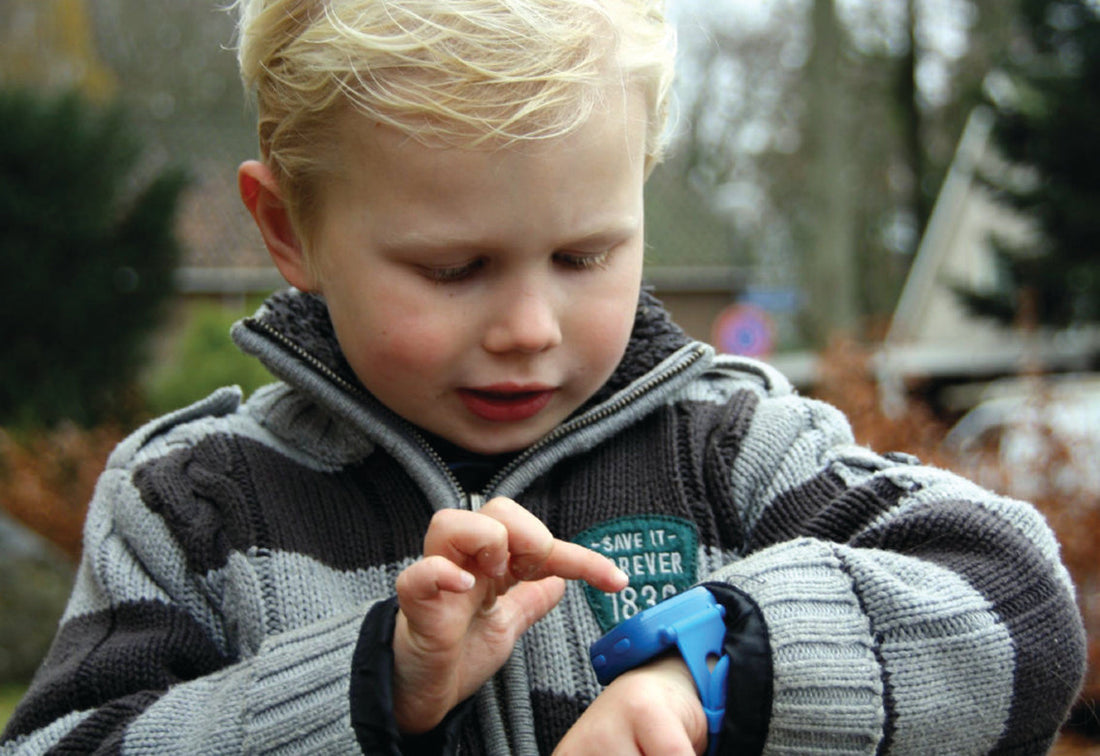
Letting go is easier with this smartwatch
Share

Children can make and receive calls using the Oaxis WatchPhone as well as send emojis and voice messages.
Oo Gin Lee is a father of three school-going kids and a former tech editor of The Straits Times. In the final installment of this Family & Tech series, produced in collaboration with Singtel, he reviews a new gadget that could help you stay in touch with your children as they start heading out of the home.
As a parent, it's always hard to let go. I remember my eldest daughter's first day in nursery. Separation anxiety is heart-wrenching when you watch, from a distance, your three-year-old pining for you in an unfamiliar environment with strangers. Yet, we know it must be done for your child to move forward in life.
The primary-school stage is not any easier, even after three kids. My youngest is seven and when my colleagues are having lunch, I am on my way to school to pick her up and take her home before rushing back to the office. I am worried that she will get lost or get on the wrong school bus.
The fear is justified. When my eldest was five or six, the relief school bus driver almost dropped her at the wrong address once. Luckily, she was alert enough to recognise that he was going the wrong way.
MAKE AND RECEIVE CALLS ON THE WRIST
Giving your young child a phone, especially if he is between four and eight years old, brings greater peace of mind.
But the fear is that he will misplace the phone. Or that the phone is too complicated to handle. Worse, he may end up getting distracted with mobile games.
Also, most kindergartens and many primary schools will not allow young children to take a phone to school.
That is where the Oaxis WatchPhone can come in handy. It is essentially a smartwatch for young kids. It has a 3G SIM card slot, a built-in microphone and a speaker so that the child can make and receive calls with the wristwatch.
More importantly, it can make and receive calls only to selected numbers, so scammers and telemarketers cannot reach the child.
The touchscreen watch interface is easy to use. My seven-year-old took to it like a fish to water. There are only five mini-screens that the child can choose from by simply swiping left and right.
The home screen has three colour themes to choose from - pink, blue and yellow. To switch the theme, simply press and hold the screen and then swipe to choose.
Two screens to the left of the home screen is the Call screen. The child simply hits Call, then swipes up and down to select from the list of pre-selected numbers to call. Tap again and the call is made.
Receiving a call is also simple. When the watch rings, the kid taps the green button to answer and the red button to reject. Just like a smartphone.
TRACK YOUR CHILD'S LAST LOCATION
To use the WatchPhone, it must first be paired with a smartphone app called Singtel Connected Things, which is available on both iOS and Android devices.
When the WatchPhone is switched on for the first time, you will be prompted to launch the app and use the phone to scan the QR code on the watch to link the device to the app.
Once linked, you can view useful information about your child's device, such as its battery life and location. You can also configure the watch through the app, such as by listing the approved contacts that the wearer can call or be called by.
A Do Not Disturb mode prevents children from playing with the device during specific hours - for example, during school time or other activities - to stave off complaints from teachers about distracted children.
The WatchPhone is also a location tracker. It has a GPS chip built-in and the device will automatically send the device's location to the Singtel Connected Things app.
By default, it pings the location every 15 minutes, but you can shorten the duration to get more frequent updates at the expense of battery life.
A cool feature is geofencing. What this means is that you can choose a location to monitor, such as the child's school or your home, and then set a radius of between 150m and 5km around the location. When the child moves out or into the "geofenced" location, the app will automatically send you a notification.
This is great for getting alerted if your child is leaving the school premises at an unexpected time and even recording the exact time your child reaches home every day.
The last feature of this watchphone is the SOS function. If the child is in trouble, he simply has to press and hold the "home" button at the side of the phone to record a 30-second voice message. The voice message and location of the watch will immediately be sent to the family members who are monitoring the child. In addition, an SMS will be sent to the phone number that has been preset as the Emergency contact in the Singtel Connected Things app.
LEAVE A VOICE MESSAGE OR AN EMOJI
Many young kids have not learnt to text, so the WatchPhone makes it easy by letting them send emojis or short voice messages to their parents. To do this, the child swipes to the Chat screen and then selects between the microphone and emoji symbols. The parent can view the emojis and listen to the voice messages in the Singtel Connected Things app.
This watchphone is also a pedometer. There is a daily goal of 5,000 steps for the child to walk towards.
EASE THE PAIN OF LETTING GO
The Oaxis WatchPhone is a great device for parents with young school-going kids. It makes letting go easier as our young child can now call us when he is lost or in trouble. In addition, we can track his GPS location through the device.
The watch's battery life can last a day and a half at the default settings.
It does look a little bulky for a kid's watch, though, but it did not bother my seven-year-old because she is so smitten with it that she is willing to compromise on looks for the super awesome feeling of having a mini-phone of her own.
PARENTING IN THE DIGITAL AGE
Over the past two months, parents have been invited to write in to share how they deal with problems of parenting in the digital age. Here are selected excerpts from writers who win for themselves three annual Qustodio licences from Singtel.
HOW DO YOU MANAGE YOUR CHILDREN'S SCREEN TIME?
We come up with a schedule - every Saturday, my child will get his iPad or laptop time - an hour per play for a maximum of three lots a day. So he knows when playtime is and will not keep asking us.
E.Ng
I am a single mother of four children aged between 10 and 16. Before Qustodio was introduced, I had been using "Screentime" as a parental control tool to monitor my kids closely. When they disobey me, I punish them by shortening their phone access time or block certain apps. When they are good, I reward them by extending their access time.
During the initial months of introducing this app, they were angry over the restrictions and threw tantrums almost every night, screaming out loud at 9 pm, "It's scream time."
The phone gets blocked automatically at 9 pm and none of the apps will work. The parent will be notified via e-mail about the newly downloaded app. You practically know every detail about what your child is doing and for how long.
As time went by, my kids got used to the restriction and agreed to daily requests to tidy up their beds, complete their homework and assist in housework before they can use their mobile devices.
Parents will have to come up with a list of duties and responsibilities and follow it strictly. Over time, the kids will get the hang of it and abide by the list of rules.
This is tough love.
Karen Koh
WHEN SHOULD KIDS GET A PHONE?
How did parenting a child in the digital age become this hard? My parents really had it easy before the advent of the Internet.
After mulling over the issues, I finally stood my ground to not give my child a mobile phone until she is in Secondary 1.
Given her gregarious nature, access to a smartphone and its every "ping" of incoming messages would just distract her from school work and other responsibilities. She would want to be in the thick of WhatsApp conversations and add her two cents' worth, and not any later, thank you, but right now. These messages, sent to her personal phone, bring with them a sense of urgency and, whether falsely or not, they demand a response, even if it came in a non-word form, like an emoticon.
And I have not even begun on the other complicated issues of exposure to undesirable sites, addiction to video games, self-indulgence on social media, cyber-bullying and more in the Pandora's box, although parental control apps like Qustodio would come in handy.
Nevertheless, a certain degree of effort and time on the part of parents is required to diligently monitor the child. Related to this would be whether punishment should be meted out during times of abuse or misuse and in what form; for by owning a mobile phone, the child takes on a new responsibility, which inevitably comes with accountability.
My stand is supported by a friend, who gave mobile phones to her children only when they were in Secondary 1. I am sticking to my guns. And I will add to the end of that statement the emoticon of a wink.
Esther Kam
